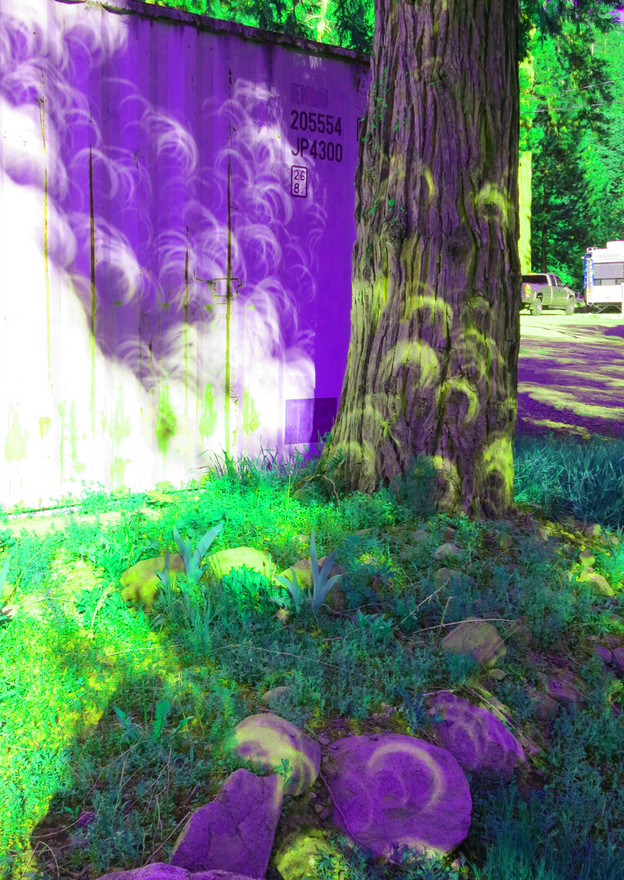Magical correspondences, part 4 of 6

What follows is part four of six written exchanges between me and Andrew Joron about poetry and science in 2012. Joron’s creative and critical work have been highly influential to me. When I contacted him after The Poetry Foundation’s Harriet blog ran an article,“From the Golden Age of San Francisco Science-Fiction Poetry to the New Age of Quantum Poetics,”about our shared interest in poetry and science, he generously responded to my poetry and speculative essays on quantum poetics published on Poems and Poetics. Joron and I have decided to present our conversation here for Jacket2.
See also parts one, two, three, five, and six.
* * *
Hi Andrew,
I think I prefer alienation for the alien, for what inhabits what I call U+F+O+L+A+N+G+U+A+G+E, but I see how your connotations with that word take you in a different direction. I have been thinking about your experimentation with sound and how Jimi Hendrix wanted his guitar to sound like it was coming from the ocean. Sometimes your poetry sounds as if it could be coming from an ocean—on another world. I think, too, of the sounds of the theremin, which are futuristic and retro all at once, which make me think of atmospheric conditions on an unknown planet. I see the sonic shapes of your poetry as self-propelling, perpetually in motion. They often combine with a rhetorical and philosophical discourse in short syllogistic forms. They break the law, too, by not assuming a human world; they make worlds by sounding them out. The speaker, when there is one, may be human or not, and the worlds of the poems may be the world of consensus reality or not. More often the worlds in your poems are the worlds the poems create. It is inspiring.
I see how we are both striving toward X and driven by wonder. In my essays I try to define X—not as QM—but as “novelty,” and not only creative or epistemological novelty, but cosmological novelty: as the known universe expands, and the expansion accelerates, novel elements are introduced. The rejection of novelty for appropriation interests me in that novel elements in the universe are introduced through recombination. However, perhaps defining X at all—even in an attempt to make that definition open, mutable—is proscriptive and takes away from the possibilities for X to be anything.
I think I see the parameters of QM differently. QM is more often articulated through “principles” rather than “laws,” and therefore it may not be as nomological as classical mechanics. I also feel that QM represents a shift of when science became philosophy. QM, like relativity that preceded it, is more self-reflexive than classical mechanics, though I agree that it has not reached poetry in that it is not actively interrogating the languages it embodies, nor does it take advantage of form to say the unsayable.
I do think QM gets beyond using the language of cause and effect to reject cause and effect. Heisenberg’s matrix mechanics was a literal matrix consisting of equations, alphabetic language, and formal-visual elements; at a structural level it went beyond the grammar of cause and effect to describe its principles, like poetry. I am trying to take a similar approach in my new project of visual poems. Also, QM only started with Heisenberg (who, in his book Physics and Philosophy, said QM needed a new language to describe it and then referenced Goethe and the role of imagination in thinking). QM continues to mutate, along with relativity, in the latest versions of string theory, which is, in some ways, behaving like philosophy. The thought experiment becomes more complex in the new physics much like in philosophical activity and poetry. While the form of classical mechanics was nomological, I suspect that the form of QM, relativity, and string theory is something else. That, to my mind, makes it more X, more like poetry.
Yes, perhaps science is not as disruptive as poetry. But science also says the unsayable. It may not be as politically or aesthetically disruptive, but it might be as cognitively and imaginatively as disruptive. It, too, is driven by wonder, as you say. In the best of the new-nu-poetries and the new-nu-sciences, the language game meets the “hunger games” (to invoke the new-nu-wave-sci-fi-lite).
Thank you for reading my poetry and your lucid and convincing words about indeterminacy as a state of pre-measurement and the swerve as a mode of action that is not itself indeterminate. I am thinking about simultaneity in spacetime, on the page and outside of it, and how time cannot be measured in linear contexts. If duration passes through an imaginary present in its becoming of memory, as Alfred Jarry has proposed, if the future momentum and position of a particle cannot be known because its present state cannot be known, then perhaps indeterminacy becomes its own (x)constant, an anti-pattern or invisible background upon which the swerve, as a concept or action, performs (through aleatoric or determined values). I imagine the spacetime on-in which this happens to be as unfathomable as a poem that takes the form of a wormhole. “Wail[ing] out” as you say!
I personally do not desire a unified field theory between poetry-science or within poetry or within science. I prefer the gestalt image you introduced, and multiplicity. There is no next equation in a unified field. I imagine an equation that is a poem at the moment of the swerve. It happens not to resolve its questions but to have more of them. As our subjective timelines narrow, our poems travel. Taking us with them?
Quantum poetics